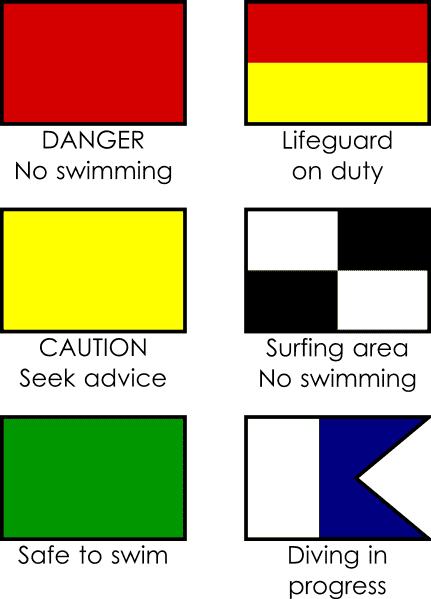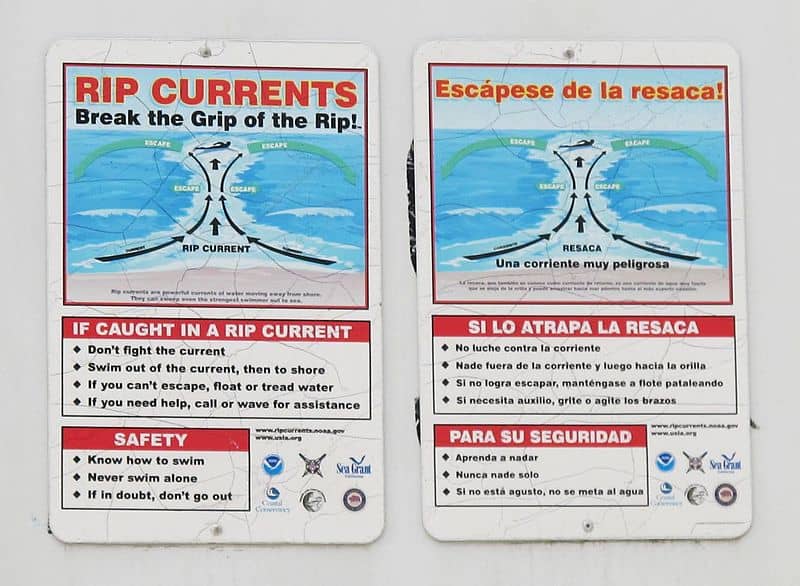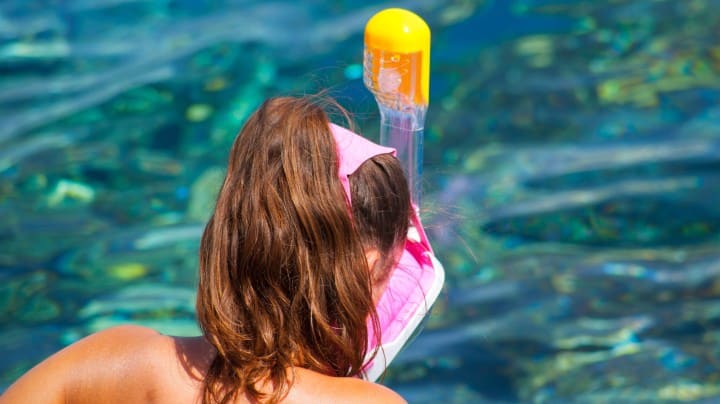Beach Flags & Warning Signs
Many beaches have beach flags and other warning signs posted for the safety of beachgoers. Knowing and obeying these signs can mean the difference between a fantastic day at the beach and tragedy. Whether or not the beach you’re at has warning flags and/or signs, please be cautious in the water because the ocean is unpredictable, and hazards may still exist.
Beach flag colors and meanings were developed by The United States Lifesaving Association, in conjunction with the International Lifesaving Federation, which makes them fairly universal in meaning. However, if there’s a flag or sign you don’t understand it’s always best to ask a lifeguard.

Picture courtesy of Wikimedia Commons. All rights reserved.
Beach Warning Flag Meanings
Beach flags are used to inform people of current water conditions. Their meaning is based on the beach flag’s color.
Two red flags mean that very dangerous conditions are present, and the water is closed to the public. Water conditions are so dangerous you could be arrested for not following these warnings.
A single red flag at the beach means the surf is high and/or strong rip currents are present. If a red flag is flying at the beach, you should use extreme caution even if you’re a strong swimmer.
A yellow flag at the beach means that while water conditions are rough, they aren’t life-threatening. Be aware that surf is still relatively high when a yellow flag is flying, and there’s still a moderate possibility of rip currents. Weak swimmers and children should wear a life jacket and/or swim near a lifeguard or stay out of the water.
Green beach flags indicate that water conditions are calm and it’s safe to swim.
Purple and blue beach flags mean that potentially dangerous marine life has been spotted in the area. Dangerous marine life includes sharks, jellyfish, and any other marine life that may cause harm to humans. Usually, these flags are flown in conjunction with other colored flags, such as red, yellow, or green.
Other Beach Warning Flags
A flag with a red horizontal stripe on top of a yellow horizontal stripe indicates lifeguards are on duty.
A yellow flag with a dot in the center indicates surfing and other non-motorized watercraft are prohibited in that area. These flags are found at beaches where surfing is common.
A black and white checked flag means the opposite. It indicates a surfing area where swimming isn’t allowed. In addition to surfing, non-motorized watercraft are allowed in the area.

Picture courtesy of Wikimedia Commons. All rights reserved.
Beach Warning Signs
Like beach warning flags, beach warning signs warn of possible dangers at the beach. The difference is they tend to be more about permanent conditions or rules than they are about changing water conditions. Usually, these signs have a picture and a written description of the warning.
Some examples of things you’re likely to see on beach warning signs are….
- What to do if caught in a rip tide
- Tsunami hazard zone
- No dogs, alcohol, swimming, surfing, fires, etc.
- No lifeguards
- Slippery rocks
- Unstable cliffs
- Strong currents
- Rip currents
- Submerged objects
- Dangerous shorebreak
- Sudden drop-off
To many joyful beach experiences!
— Lisa Dworkin


